Growing onions in pots might sound like a challenge relegated to sprawling farms, but I’m here to tell you it’s totally achievable, even if you only have a small balcony or patio! Forget those expensive grocery store onions – imagine stepping outside and harvesting your own fresh, flavorful bulbs whenever you need them.
For centuries, onions have been a staple in cuisines worldwide, dating back to ancient civilizations in Asia and the Middle East. They were even revered in ancient Egypt, often depicted in tombs and used as offerings. Now, you can continue this rich history right in your own home! But why bother growing onions in pots when you can just buy them? Well, for starters, homegrown onions often taste better, especially when harvested fresh. Plus, it’s incredibly satisfying to nurture a plant from a tiny seedling to a mature bulb.
This DIY guide is packed with simple tricks and hacks that will help you successfully grow onions in pots, regardless of your gardening experience. We’ll cover everything from choosing the right pot and soil to watering and fertilizing techniques. Whether you’re a seasoned gardener or a complete beginner, I’m confident that you’ll be harvesting your own delicious onions in no time. So, let’s dive in and discover the secrets to growing onions in pots like a pro!
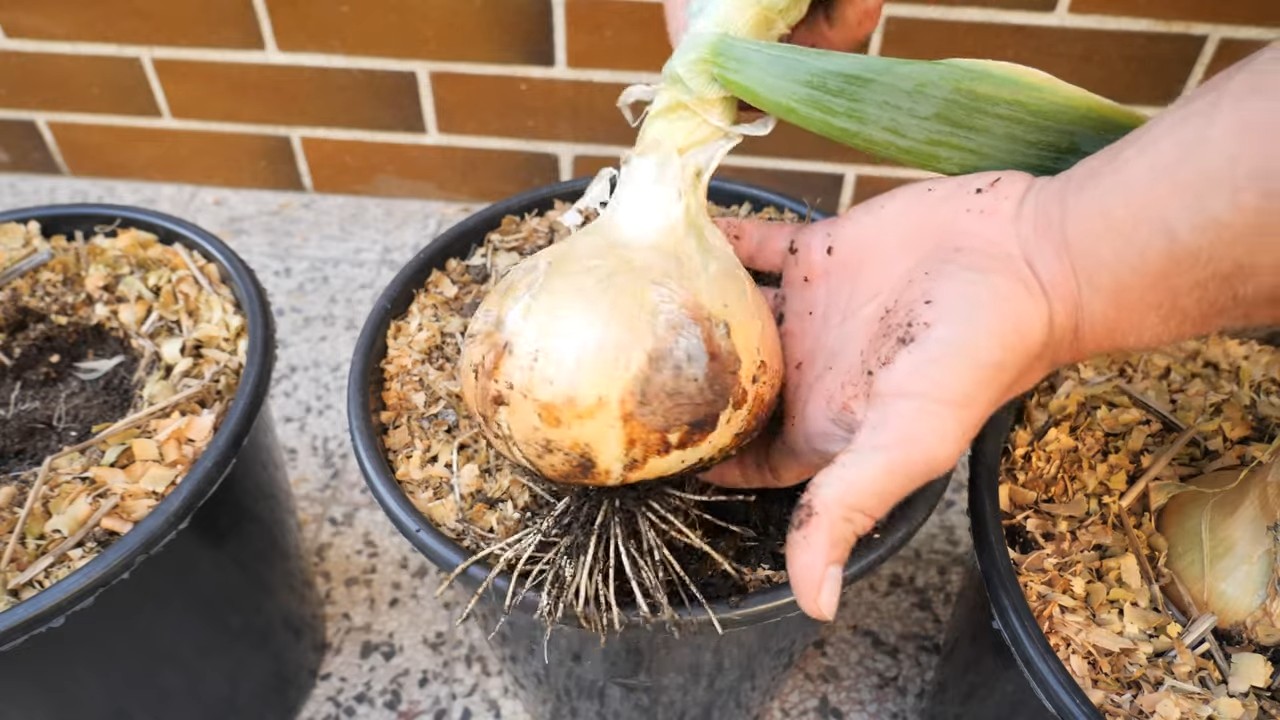
Growing Onions in Pots: A Comprehensive DIY Guide
Hey there, fellow gardening enthusiasts! I’m so excited to share my tried-and-true method for growing onions in pots. Trust me, even if you’re short on space or just want to keep your onions close at hand, this is a fantastic way to enjoy fresh, homegrown flavor. Let’s dive in!
Why Grow Onions in Pots?
Before we get started, you might be wondering why you’d even bother growing onions in pots. Well, there are several compelling reasons:
* Space Saving: Perfect for balconies, patios, or small gardens.
* Pest Control: Easier to monitor and protect your onions from pests and diseases.
* Mobility: You can move your pots to the sunniest spot or shelter them from harsh weather.
* Extended Growing Season: Start your onions indoors and transplant them later, giving you a head start.
* Aesthetic Appeal: Onions can be quite attractive in pots, adding a touch of greenery to your space.
What You’ll Need
Okay, let’s gather our supplies. Here’s what you’ll need to successfully grow onions in pots:
* Onion Sets or Seedlings: Onion sets are small, immature bulbs that are easy to plant. Seedlings are also a great option, especially if you want to grow specific varieties.
* Pots: Choose pots that are at least 8-12 inches deep and wide. Good drainage is crucial, so make sure your pots have drainage holes.
* Potting Mix: Use a high-quality potting mix that’s well-draining and rich in organic matter. Avoid using garden soil, as it can compact in pots.
* Fertilizer: A balanced fertilizer (e.g., 10-10-10) or an organic fertilizer like compost tea or bone meal will provide essential nutrients.
* Watering Can or Hose: For regular watering.
* Trowel or Small Shovel: For planting.
* Optional: Mulch (straw, wood chips, or shredded leaves) to help retain moisture and suppress weeds.
Choosing the Right Onion Variety
Not all onions are created equal! Some varieties are better suited for container growing than others. Here are a few of my favorites:
* Walla Walla Sweet: Known for their mild, sweet flavor.
* Red Burgundy: A beautiful red onion with a slightly pungent taste.
* White Lisbon: A versatile bunching onion that’s great for salads and garnishes.
* Yellow Spanish: A classic yellow onion with a strong flavor.
Consider your climate and taste preferences when choosing your onion variety.
Step-by-Step Planting Guide
Alright, let’s get our hands dirty! Here’s how to plant your onions in pots:
1. Prepare Your Pots
* Clean Your Pots: If you’re using pots that have been used before, wash them thoroughly with soap and water to remove any lingering dirt or pathogens.
* Add Potting Mix: Fill your pots with potting mix, leaving about an inch or two of space at the top.
* Water the Soil: Moisten the potting mix thoroughly before planting. This will help settle the soil and provide moisture for the onion sets or seedlings.
2. Planting Onion Sets
* Spacing: Space onion sets about 3-4 inches apart in the pot. This will give them enough room to grow without overcrowding.
* Planting Depth: Plant the onion sets so that the tip is just barely visible above the soil surface. Don’t bury them too deep, as this can hinder their growth.
* Firm the Soil: Gently firm the soil around the onion sets to provide support.
3. Planting Onion Seedlings
* Gently Remove Seedlings: Carefully remove the onion seedlings from their trays or containers.
* Spacing: Space onion seedlings about 3-4 inches apart in the pot, similar to onion sets.
* Planting Depth: Plant the seedlings at the same depth they were growing in their original containers.
* Firm the Soil: Gently firm the soil around the seedlings to provide support.
4. Watering After Planting
* Water Thoroughly: After planting, water the onions thoroughly to help them establish their roots.
* Avoid Overwatering: Be careful not to overwater, as this can lead to root rot. The soil should be moist but not soggy.
Caring for Your Onions
Now that your onions are planted, it’s time to provide them with the care they need to thrive.
1. Sunlight
* Full Sun: Onions need at least 6-8 hours of sunlight per day. Place your pots in a sunny location where they will receive plenty of direct sunlight.
* Rotate Pots: Rotate your pots regularly to ensure that all sides of the onions receive equal sunlight.
2. Watering
* Regular Watering: Water your onions regularly, especially during dry periods. The soil should be consistently moist but not waterlogged.
* Check Soil Moisture: Check the soil moisture by sticking your finger into the soil. If the top inch feels dry, it’s time to water.
* Watering Technique: Water at the base of the plants to avoid wetting the foliage, which can increase the risk of fungal diseases.
3. Fertilizing
* Initial Fertilizing: About two weeks after planting, fertilize your onions with a balanced fertilizer (e.g., 10-10-10) or an organic fertilizer like compost tea or bone meal.
* Regular Fertilizing: Continue to fertilize your onions every 2-3 weeks throughout the growing season.
* Follow Instructions: Follow the instructions on the fertilizer package for proper application rates.
4. Weeding
* Remove Weeds: Regularly remove any weeds that appear in your pots. Weeds can compete with your onions for nutrients and water.
* Hand Weeding: Hand weeding is the best way to remove weeds without damaging your onions.
5. Pest and Disease Control
* Monitor for Pests: Keep an eye out for common onion pests like thrips and onion maggots.
* Organic Pest Control: If you spot pests, try using organic pest control methods like insecticidal soap or neem oil.
* Prevent Diseases: To prevent fungal diseases, ensure good air circulation around your onions and avoid overwatering.
Harvesting Your Onions
The moment we’ve all been waiting for! Here’s how to harvest your onions:
1. When to Harvest
* Bulb Onions: Bulb onions are typically ready to harvest when the tops start to fall over and turn yellow or brown.
* Green Onions: Green onions can be harvested at any time when they are large enough to use.
2. Harvesting Technique
* Gently Pull: Gently pull the onions from the soil, being careful not to damage the bulbs.
* Loosen the Soil: If the soil is compacted, you may need to loosen it with a trowel before pulling the onions.
3. Curing Onions
* Curing Process: To cure your onions, spread them out in a single layer in a warm, dry, and well-ventilated place for about 2-3 weeks.
* Drying: The curing process allows the outer layers of the onions to dry and harden, which helps them store longer.
* Storage: After curing, store your onions in a cool, dry, and dark place.
Troubleshooting Common Problems
Even with the best care, you might encounter a few challenges along the way. Here are some common problems and how to address them:
* Yellowing Leaves: Could be caused by overwatering, underwatering, nutrient deficiencies, or pests. Check the soil moisture, fertilize if needed, and inspect for pests.
* Small Bulbs: Often due to insufficient sunlight, overcrowding, or poor soil. Ensure your onions are getting enough sunlight, thin out the plants if necessary, and fertilize regularly.
* Root Rot: Caused by overwatering. Ensure your pots have good drainage and allow the soil to dry out slightly between waterings.
* Pest Infestations: Use organic pest control methods like insecticidal soap or neem oil to control pests.
Tips for Success
Here are a few extra tips to help you grow the best onions possible:
* Start with Healthy Sets or Seedlings: Choose onion sets or seedlings that are firm and free from disease.
* Amend Your Soil: Before planting, amend your potting mix with compost or other organic matter to improve its fertility and drainage.
* Mulch Your Pots: Mulch helps retain moisture, suppress weeds, and regulate
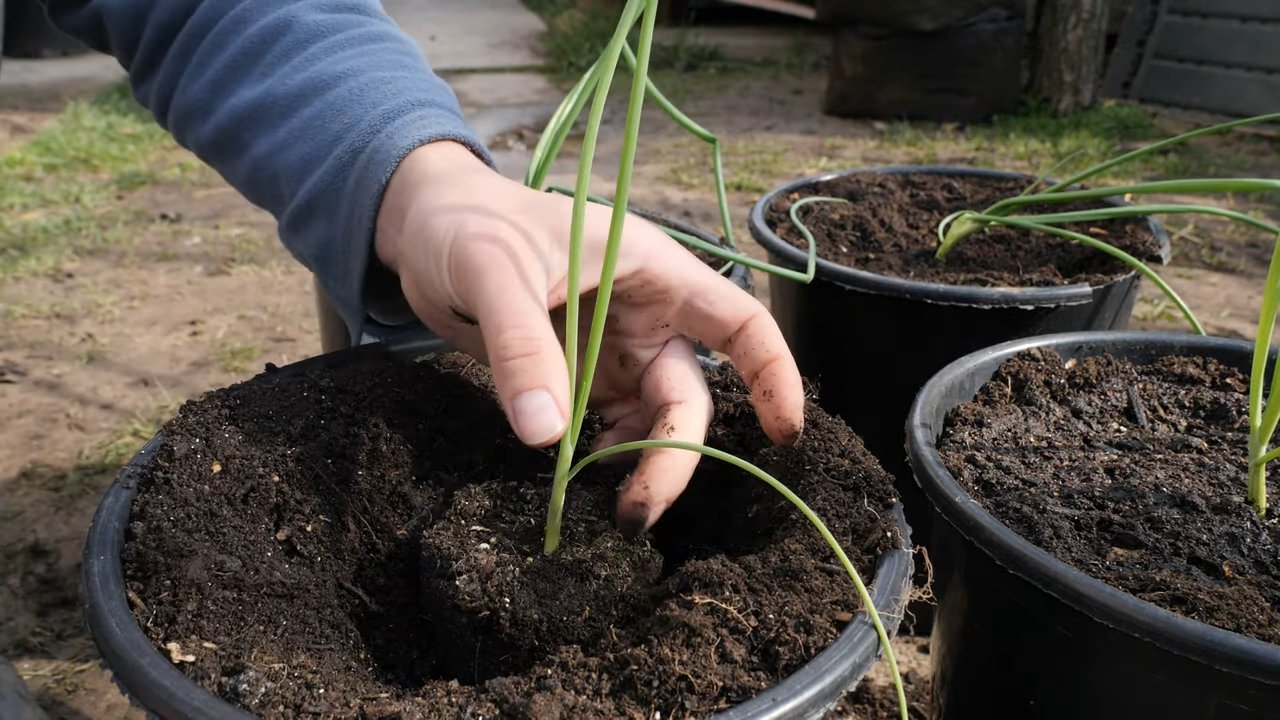
Conclusion
So, there you have it! Growing onions in pots is not only achievable, but it’s also a rewarding and surprisingly simple endeavor. We’ve walked through the steps, from selecting the right onion variety and pot size to understanding the importance of sunlight and consistent watering. But why should you actually take the plunge and try this DIY trick?
Firstly, consider the convenience. Imagine fresh, flavorful onions readily available right outside your door, or on your balcony, whenever you need them. No more last-minute trips to the grocery store when you realize you’re missing that crucial ingredient for your favorite recipe. This is especially beneficial for those with limited garden space or those who live in apartments. Container gardening brings the garden to you!
Secondly, think about the control you have over the growing environment. You can tailor the soil composition, watering schedule, and even the amount of sunlight your onions receive, ensuring optimal growing conditions. This level of control can lead to healthier, more flavorful onions compared to those grown in less-than-ideal conditions in a traditional garden. Plus, you’re less susceptible to soilborne pests and diseases that can plague in-ground gardens.
Thirdly, let’s talk about the sheer satisfaction of nurturing something from a tiny seed or set to a fully grown, delicious onion. There’s a unique sense of accomplishment that comes with harvesting your own food, knowing that you played an active role in its creation. It’s a connection to nature that’s often missing in our modern lives.
But the possibilities don’t stop there! Feel free to experiment with different onion varieties. Try growing red onions for their vibrant color and slightly sweeter flavor, or shallots for their delicate, garlic-like taste. You can also explore companion planting by adding herbs like rosemary or thyme to your onion pots. These herbs not only enhance the flavor of your onions but also help deter pests.
Another variation to consider is succession planting. By planting new onion sets every few weeks, you can ensure a continuous harvest throughout the growing season. This way, you’ll always have fresh onions on hand whenever you need them.
Growing onions in pots is a fantastic way to enjoy fresh produce, even with limited space. It’s a cost-effective, environmentally friendly, and incredibly rewarding experience.
So, what are you waiting for? Grab a pot, some onion sets, and get started on your own container onion garden today! We’re confident that you’ll be amazed at how easy and enjoyable it is. And most importantly, don’t forget to share your experiences with us! We’d love to hear about your successes, challenges, and any creative variations you come up with. Share your photos and stories in the comments below, and let’s inspire each other to grow more of our own food. Happy gardening!
Frequently Asked Questions (FAQ)
What is the best type of onion to grow in a pot?
The best type of onion to grow in a pot depends on your personal preference and the size of your pot. However, some varieties tend to perform better in containers than others. Bunching onions (also known as scallions or green onions) are an excellent choice because they are relatively small and quick to mature. They don’t require a lot of space and can be harvested continuously. Bulb onions, such as yellow, white, or red onions, can also be grown in pots, but you’ll need to choose a larger pot and ensure adequate spacing between the plants. Consider short-day or intermediate-day onion varieties if you live in a region with shorter growing seasons. These varieties are better suited for container gardening as they mature more quickly. Ultimately, experiment with different varieties to see which ones thrive best in your specific climate and growing conditions.
How often should I water my potted onions?
Watering frequency is crucial for successful onion cultivation in pots. Onions need consistent moisture, but they don’t like to sit in soggy soil. A good rule of thumb is to water your onions when the top inch of soil feels dry to the touch. During hot, dry weather, you may need to water them daily, while during cooler, wetter periods, you can reduce the frequency. When you water, water deeply, ensuring that the water drains out of the bottom of the pot. This helps to encourage deep root growth. Avoid overhead watering, as this can lead to fungal diseases. Instead, water at the base of the plant. Monitor your onions closely and adjust your watering schedule as needed based on the weather conditions and the moisture level of the soil.
What kind of soil should I use for growing onions in pots?
The ideal soil for growing onions in pots is a well-draining, nutrient-rich potting mix. Avoid using garden soil, as it can be too heavy and compact, hindering root growth and drainage. A good potting mix will typically contain a blend of peat moss, perlite, and vermiculite. You can also amend your potting mix with compost or other organic matter to improve its fertility and drainage. Onions prefer a slightly acidic to neutral soil pH, ideally between 6.0 and 7.0. You can test the pH of your soil using a soil testing kit and adjust it as needed with lime or sulfur. Ensure that your potting mix is loose and airy to allow for proper root development and drainage.
How much sunlight do onions need when grown in pots?
Onions are sun-loving plants and require at least 6-8 hours of direct sunlight per day to thrive. When growing onions in pots, choose a location that receives plenty of sunlight throughout the day. If you don’t have a sunny spot, you can supplement with grow lights. Rotate your pots regularly to ensure that all sides of the plants receive adequate sunlight. Insufficient sunlight can lead to leggy growth, reduced bulb size, and lower yields. Monitor your onions closely and adjust their position as needed to maximize their exposure to sunlight.
How do I fertilize my potted onions?
Onions are heavy feeders and require regular fertilization to produce healthy bulbs. Start by incorporating a slow-release fertilizer into your potting mix at planting time. This will provide a steady supply of nutrients to your onions throughout the growing season. In addition to the slow-release fertilizer, you can also supplement with liquid fertilizer every 2-3 weeks. Choose a fertilizer that is high in phosphorus and potassium, as these nutrients are essential for bulb development. Avoid over-fertilizing, as this can lead to excessive foliage growth at the expense of bulb formation. Follow the instructions on the fertilizer label carefully and adjust the dosage as needed based on the growth of your onions.
How do I know when my potted onions are ready to harvest?
The timing of harvest depends on the type of onion you are growing and your personal preference. Bunching onions can be harvested continuously as needed, starting when they are about 6 inches tall. Bulb onions are typically ready to harvest when the tops begin to fall over and turn yellow or brown. This indicates that the bulbs have reached their mature size and are ready to be cured. To harvest bulb onions, gently loosen the soil around the bulbs and pull them up. Allow the bulbs to dry in a well-ventilated area for several days to cure. Curing helps to toughen the outer skin and prevent rot. Once the bulbs are cured, you can store them in a cool, dry place for several months.
What are some common pests and diseases that affect onions grown in pots, and how can I prevent them?
While growing onions in pots can minimize some pest and disease issues, they are still susceptible to certain problems. Common pests include onion maggots, thrips, and aphids. Diseases include downy mildew, onion smut, and bulb rot. To prevent these problems, start with healthy onion sets or seeds. Use a well-draining potting mix and avoid overwatering. Practice crop rotation and avoid planting onions in the same pot year after year. Monitor your onions regularly for signs of pests or diseases and take action promptly. You can use organic pesticides or fungicides to control infestations or infections. Ensure good air circulation around your plants to prevent fungal diseases. Remove any infected plants immediately to prevent the spread of disease.

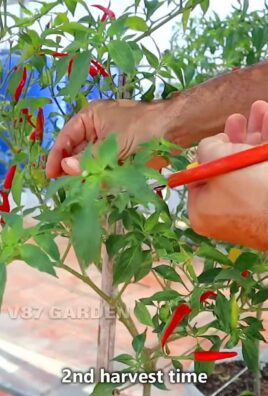
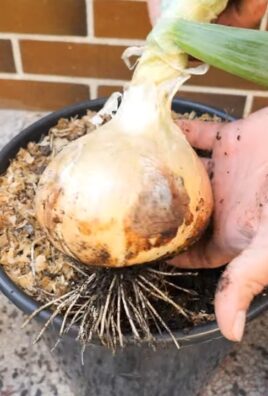
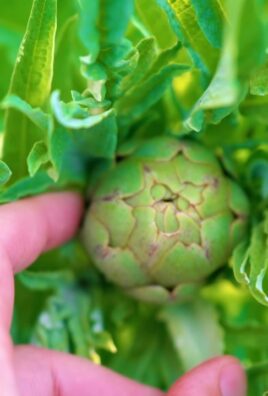
Leave a Comment